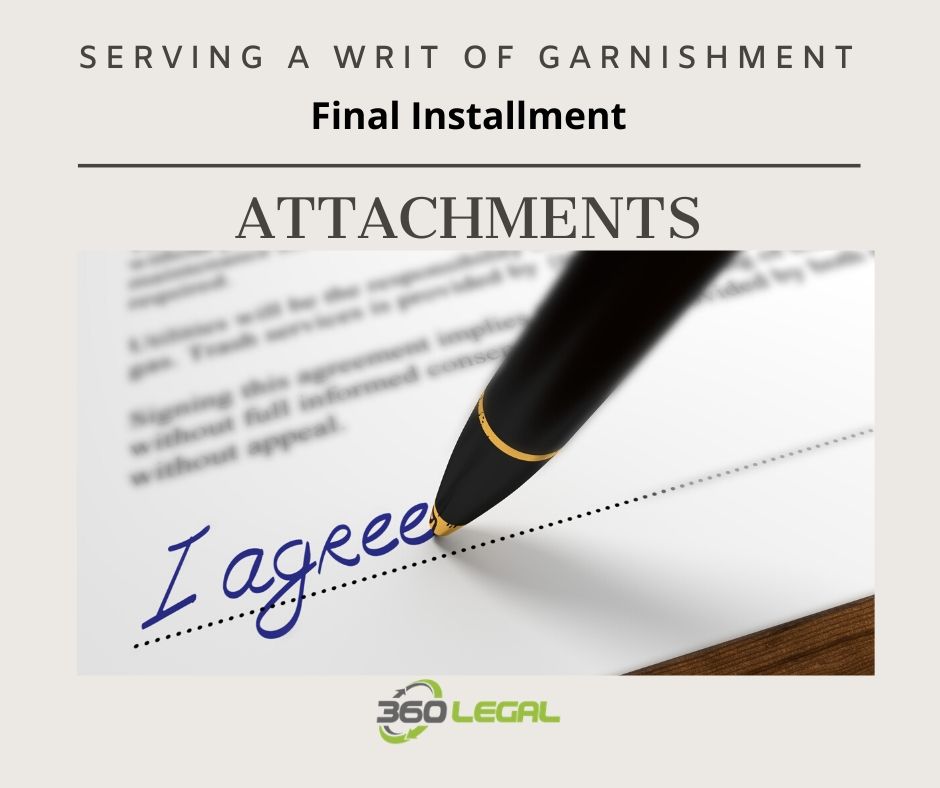Testing RSS Feeds.. ignore post.
Testing RSS Feeds.. ignore post.
Serving a Writ Of Garnishment – Final Installment

Attachments
Another kind of Writ garnishment is called an attachment (or attachment of earnings), which requires the garnishee to deliver all the accused’s money or assets the person has at the time of service of process to the court, which is to be paid over a certain amount of time. Because this kind of garnishment is not continuing in nature but is exempt from the type of limitations that apply to wage garnishment, it is usually used against banks or other persons or companies that sustain liquidated commitments in the regular course of business. The garnishment typically starts the following pay period after the attachment is served.
Federal taxes.
Under current federal tax law, a garnishment by the Internal Revenue Service (IRS) is a kind of administrative levy. As such, with an IRS levy, no court order is required. Instead, the IRS follows certain procedures before proceeding with the garnishment.
The IRS should have evaluated the tax and should have sent out a written Notice and Demand for Payment.
The taxpayer must have ignored or refused to pay the tax within the time prescribed in the notice. The IRS then sends out a Final Notice of Intent to Levy together with a Notice of Your Right to A Hearing. The IRS will wait a minimum of 30 days before the levy is issued.
The IRS may serve a Final Notice of intent to Levy in person, may leave the notice at the taxpayer’s home or normal place of business, or might send it to the last recognized address by certified or registered mail. The taxpayer does not require that the individual.
Author
We are Social!
Latest tweets
Popular Tags
Testimonials
"5 star service ! prompt serving, helpful, professional . "
"Mike is awesome. Our firm has hired him on several occasions and we are very happy with his work. His prompt serving, helpful, professional and always in communication. I recommend him highly! "
"360Legal provides speedy and easy to use Process Service that is flexible, and very transparent with nearly instant reporting. It is very helpful for us to be able to track the status of our process service jobs, especially when they are time sensitive. "
Latest News
-

RMAI 2021 Annual Conference RMAI Annual Conference
April 12-15, 2021 -

NATIONAL CREDITORS BAR ASSOCIATION 2020 SPRING CONFERENCE
May 19-21, 2021 -

ALFN ANSWERS 2021
Jul 18-21, 2021 -

Annual Convention and Expo
Oct. 17-21, 2021 -

Florida Association of Professional Process Servers 33rd Quarter Board Meeting/Professional Beach Getaway
Aug. 20-22, 2021












